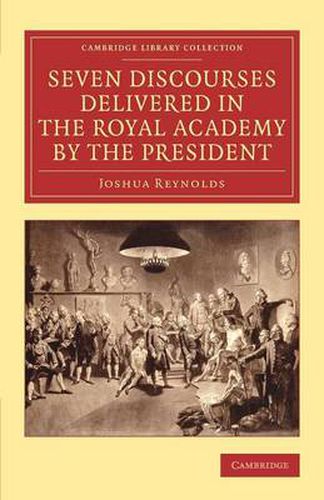Readings Newsletter
Become a Readings Member to make your shopping experience even easier.
Sign in or sign up for free!
You’re not far away from qualifying for FREE standard shipping within Australia
You’ve qualified for FREE standard shipping within Australia
The cart is loading…






As well as being the most distinguished painter of his generation, Sir Joshua Reynolds (1723-92) was also the author of several works of art criticism and guides for artists, some of which originated as lectures delivered to the students of the Royal Academy by him as their founding president. This work, first published in 1778, collects six of the addresses given to the Academy on ‘Prize Day’, between 1769 and 1776, prefaced with the first address by Reynolds to his fellow artists of the newly founded institution in 1769. Each discourse was later printed and distributed to those present at Reynolds’ expense. They present his views of the purpose of art, and in particular the necessity of intellectual dignity in what he calls the ‘great style’ of the Florentine Renaissance masters. The discourses also demonstrate his wide reading among the aesthetic theorists of his own and earlier ages.
$9.00 standard shipping within Australia
FREE standard shipping within Australia for orders over $100.00
Express & International shipping calculated at checkout
As well as being the most distinguished painter of his generation, Sir Joshua Reynolds (1723-92) was also the author of several works of art criticism and guides for artists, some of which originated as lectures delivered to the students of the Royal Academy by him as their founding president. This work, first published in 1778, collects six of the addresses given to the Academy on ‘Prize Day’, between 1769 and 1776, prefaced with the first address by Reynolds to his fellow artists of the newly founded institution in 1769. Each discourse was later printed and distributed to those present at Reynolds’ expense. They present his views of the purpose of art, and in particular the necessity of intellectual dignity in what he calls the ‘great style’ of the Florentine Renaissance masters. The discourses also demonstrate his wide reading among the aesthetic theorists of his own and earlier ages.